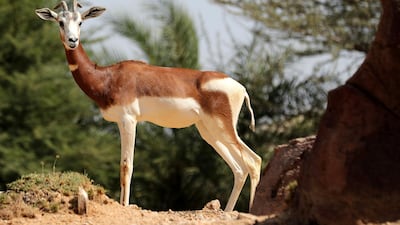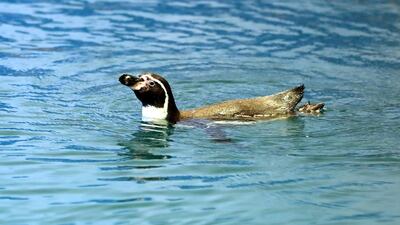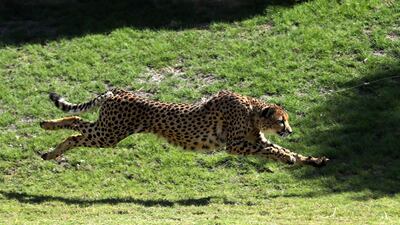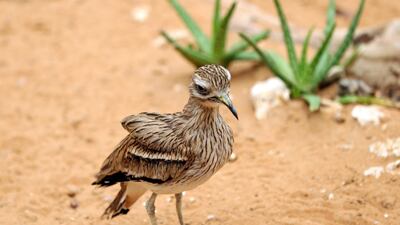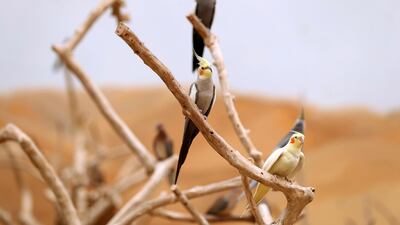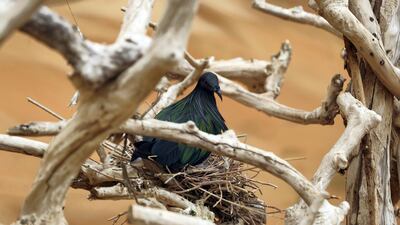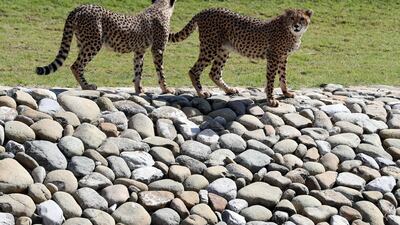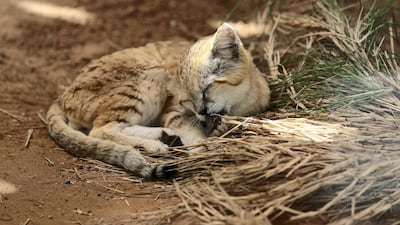Inside the walls of Al Ain Zoo, an incredible 4,000 animals and creatures live on 900-hectare parkland.
There are 200 species – and hundreds of keepers and vets in charge of their welfare.
So how do they manage to keep order, juggle dietary and let visitors interact with everything from a rhino to a big cat?
The National went to the zoo, in the foothills of Jebel Hafeet, to find out.
We begin our tour with the skilled keepers that train and manage the welfare of the nine cheetahs, and we meet three of the fastest – Nazik, Cleo and Firas.
The big cats are from South Africa, and can run at a speed of 112 kilometres per hour.
“They can reach this speed in three seconds – but they also give up very quickly because they don’t want to waste their energy,” said Myyas Qarqaz, general curator at Al Ain Zoo.
“It takes a lot of energy for them to reach that speed so quickly.
As the spectators wait to see the cheetahs run, they are briefed on the significance of the species, which is the fastest mammal on land, and considered 'vulnerable' by the the International Union for the Conservation of Nature's Red List of Threatened Species.
When the cheetahs are not exercising, they are trained in ‘positive behaviour’ by the keepers.
This includes performing basic acts such as responding to whistles, obeying commands to go in and out of their sleeping chambers, and receiving medical treatment.
"When you take your pet to the vet for instance, you have to hold them in place to take an injection," said Mr Qarqaz
In a demonstration for The National, the keepers opened a backdoor and signalled for two young cheetahs to enter from the backyard.
The two crawled swiftly inside and sat down in front of the bars waiting to be fed.
“This is called positive reinforcement training," said Mr Qarqaz. "We try to reinforce positive behaviours by rewarding them with something they like, meat, when they demonstrate the task they were asked to do.”
This form of training has replaced “the old concept of forcing animals to do things”, said the general curator.
“At the zoo we only focus on natural behaviours of the animal, we are not a circus, we don’t ask animals to do what they don’t normally do."
In another section of the park, the rhinos are contained using a system called a "tamer", which looks much like a caged corridor, leading from their pen out into the wildlife safari area of the zoo.
Three rhinoceros rested in a small outdoor sandy area, before being led through the corridor and over a metallic platform.
“This is a weighing scale within a tamer system. There is a door at each end so we can restrain them if we need to,” said Mr Qarqaz.
“They are trained to return in the afternoon when we call them."
This simple device avoids the need of chemical substances to quieten the animals every time they need to be examined.
Expansion plans for 2021
By the end of this year, the zoo will open a number of additional wildlife facilities.
Those include Koala Land, the Chimpanzee Forest and a Sand Cat Conservation Centre, plus an elephant safari, a lion safari, a gorilla sanctuary and a reptile park.
The safaris will include activities to enable the public to have close-encounter experiences with the wild animals.
Eco-tourism accommodation is also being put in place, to enable guests to book overnight stays and enjoy activities such as hiking and stargazing in a natural reserve.
Currently, the zoo contains 207 species including 71 mammals, 83 birds, 38 reptiles, and 15 domesticated animals, including camels.
Maintaining the animals requires a team of 150 people, and it is a complex task to ensure each creature thrives in captivity.
One of the biggest challenges faced by the keepers is providing the correct food for each animal.
Last year, more than 2.5 million kilos of feed and forage was needed, including 85,000kg of meat, 25,000kg of fish and shrimps, 24,500kg of frozen mice and chicks, and 225,000kg of fruit and vegetables.
The mental health of the animals is also key, said Mr Qarqaz.
“Taking care of animals in the zoo depends a lot on the species itself, for each group they have their specific husbandry," he said.
Our role is to provide the right habitat for each.
“Our keepers also give the right enrichment to stimulate the mental and psychological behaviour of the animals; so taking care of them is a big story based on the specific needs of each species."
















